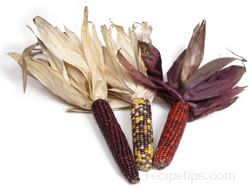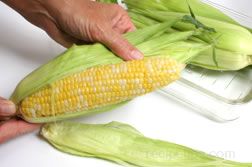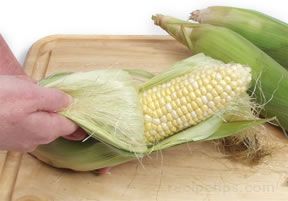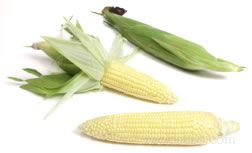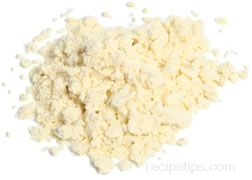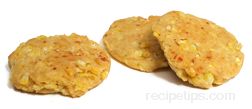Five of the most common types of corn are dent, flint, flour, popcorn, and sweet. Dent corn is low in sugar content and high in starch with kernels that are very firm. Most corn grown in the United States is dent corn, also known as field corn, which is named for the indentation that forms in the kernels as the corn dries in the fields. Dent corn is primarily used for animal feed and commercially prepared products for human consumption, such as syrups, sugars, alcoholic drinks, starch, oil, corn chips, cereals, and sweeteners for soft drinks. Non-edible manufactured goods are also produced from dent corn, such as plastics, adhesives, and fuel additives.
Flint corn is another type of corn usually associated with the multicolored ears that are used as a popular decoration in the autumn months. The kernels are very hard, but they can be ground into meal and used for human consumption. Hominy, or posole, is usually made from flint corn, as is masa harina, which is dried posole meal, used for making tamales and tortillas. The Italian dish polenta is most often made with flint corn.
Flour corn, as the name indicates, is grown solely as a source for the production of corn flour. The kernels are starchy and much softer than other types of corn allowing flour milling to be an easier process. Corn varieties that have drier, harder kernels, such as flint corn, are often ground into coarse meal, but can be difficult to grind into fine flour.
Popcorn is a special variety of dried corn that contains a high moisture content. About 14% of the composition of the kernel is water, which creates steam when the kernel is heated. This causes the kernels to explode and pop open because the steam cannot escape.
Sweet Corn, commonly referred to as "corn on the cob" is often considered to be a vegetable rather than a grain, probably because it is most often eaten fresh like a vegetable. Sweet corn has a higher sugar content than other types of corn, but the sugar begins to convert to starch after it is harvested, so it is always best when it is eaten fresh. Although there are many different varieties, the three types of sweet corn that are readily available are white corn (white kernels), yellow corn (yellow kernels), and a hybrid of both white and yellow, often referred to as peaches and cream or butter and sugar corn.
Corn is a good source of vitamin A, manganese, and potassium, and it contains protein, but not to the same degree as rice or wheat. For cabinet storage, sealed containers of plastic or glass are the best for storing whole corn kernels and popcorn. Dried whole corn kernels may keep for several years if properly stored.

